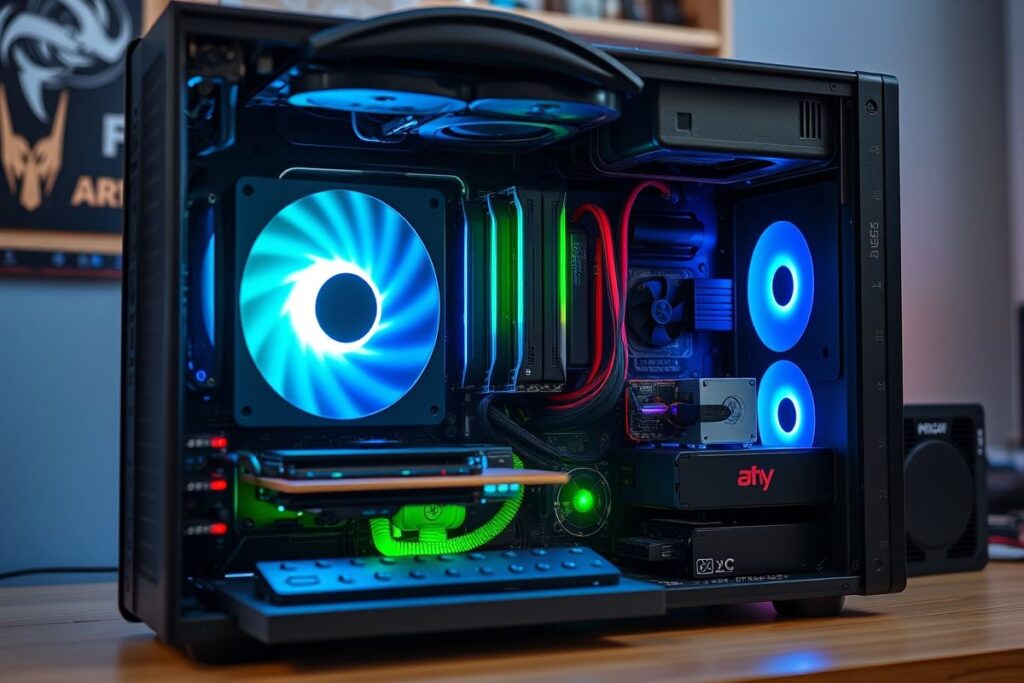The thrill of booting up a freshly built gaming PC is unmatched. But what if you could achieve that same rush, that feeling of accomplishment, without breaking the bank? Enter the world of building a gaming PC from old parts. It’s a journey of discovery, a testament to ingenuity, and a surprisingly effective way to get back into the game. This approach offers a unique blend of cost-effectiveness, environmental consciousness, and the sheer joy of creation. Forget the pre-built boxes and the hefty price tags; this is about breathing new life into forgotten hardware, transforming obsolete components into a powerful gaming rig. It’s about the satisfaction of knowing you built it yourself, piece by piece, resurrected from the digital graveyard. Prepare to dive into the rewarding world of building a gaming PC from old parts.

Unearthing the Treasures: Sourcing Your Components
The Attic and Beyond: Finding Hidden Gems
Your first stop on this treasure hunt? Your own home. Attics, basements, and closets are often hiding forgotten tech treasures. That old laptop gathering dust, a retired desktop, even ancient peripherals could hold valuable components. Dust them off and see what you can salvage.
Don’t underestimate the power of networking. Ask family and friends if they have any old computers they’re willing to part with. You might be surprised at what people are willing to give away. This can be a great way to acquire parts for free or at a significantly reduced cost.
Online marketplaces and local computer repair shops are also excellent resources. Often, these places have a stockpile of used parts just waiting for a second life. You can often find amazing deals on components that still have plenty of life left in them.
Assessing the Viability of Old Hardware
Once you’ve gathered a collection of potential parts, it’s time to assess their viability. Check the specifications of each component. Research their performance capabilities and compatibility with other parts. This research will help you determine what you can reuse and what needs replacing.
Pay close attention to the CPU, GPU, and RAM. These are the core components that will determine the overall performance of your gaming PC. While older components can still be useful, it’s crucial to ensure they meet the minimum requirements for the games you want to play.
Testing the parts is crucial. If possible, try booting them up in another system or using diagnostic tools to ensure they’re still functional. This can save you a lot of headaches down the road.
Breathing New Life into Old Hardware
Maximizing Performance with Strategic Upgrades
Even with older parts, strategic upgrades can significantly boost performance. Consider adding a new solid-state drive (SSD) for faster boot times and game loading. Even a relatively inexpensive SSD can make a world of difference in overall system responsiveness.
Adding more RAM is another cost-effective upgrade that can significantly improve performance, especially in modern games. Check your motherboard’s specifications to see how much RAM it can support and consider upgrading to the maximum capacity.
If your budget allows, consider upgrading the graphics card. This is often the most impactful upgrade for gaming performance. Even a mid-range modern GPU can offer a significant performance boost over older cards.
Compatibility Considerations: Mixing and Matching Components
Building a PC from old parts requires careful consideration of compatibility. Different components use different interfaces and standards. Make sure your chosen parts are compatible with each other.
Pay close attention to the motherboard’s socket type, RAM type, and available expansion slots. These factors will determine which CPUs, RAM modules, and graphics cards you can use.
Research online forums and compatibility charts to ensure all your components will work together harmoniously. A little research upfront can save you a lot of frustration later.
The Assembly Process: Putting the Pieces Together
A Step-by-Step Guide to Building Your Retro Rig
With your parts gathered and compatibility confirmed, it’s time for the exciting part: assembly. Consult online resources and manuals for detailed instructions specific to your components.
Take your time and be methodical. Organize your workspace and keep track of screws and small parts. Patience and attention to detail are key to a successful build.
Don’t be afraid to ask for help. Online forums and communities are full of experienced builders willing to offer advice and guidance.
Troubleshooting Common Build Issues
Encountering problems during the build process is normal. Don’t panic. Methodically troubleshoot the issue by checking connections, reseating components, and consulting online resources.
Common issues include boot failures, display problems, and overheating. Researching these issues online can often lead to quick solutions.
If you’re still stuck, don’t hesitate to ask for help from experienced builders online or at your local computer repair shop.
The Frugal Gamer’s Triumph: Enjoying Your Creation
The moment of truth: powering on your resurrected gaming rig. The satisfaction of seeing it boot up, knowing you built it from salvaged parts, is a feeling unlike any other. It’s a testament to resourcefulness and a victory for frugal gaming.
Enjoy the fruits of your labor. Fire up your favorite games and experience the thrill of PC gaming without the hefty price tag. You’ve not only saved money but also contributed to a more sustainable approach to technology.
This journey is about more than just building a PC; it’s about the joy of creation, the thrill of problem-solving, and the satisfaction of knowing you’ve given old hardware a new purpose.

Leave a Reply